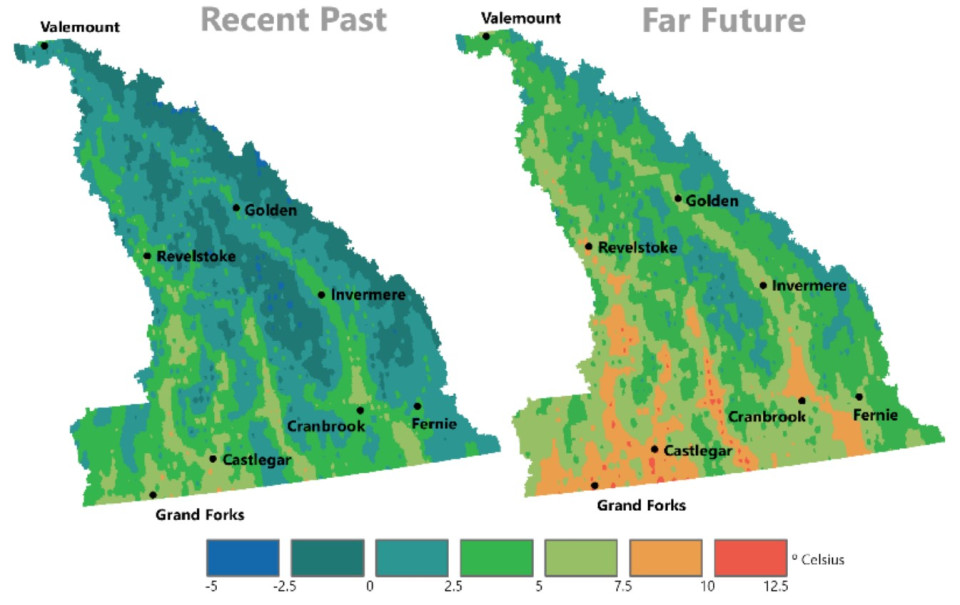
The climate is changing locally, provincially, and globally. The average global temperature has already increased by 1 degree Celsius (°C) above pre-industrial levels. In Cranbrook, the annual average temperature has increased by 1.7°C over the last century, with upward trends expected to continue.
Projections for the effects of climate change in the future have been made for the Columbia Basin region in which Cranbrook resides. The Columbia Basin Climate Source is a partnership between Columbia Basin Trust, the Columbia Basin Rural Development Institute and the Selkirk Geospatial Research Centre. By 2050, Cranbrook expects to experience an average annual temperature increase of up to 2.2°C with an additional 24 days over 25°C each year (under RCP 8.5, high carbon scenario). In March 2020, an analysis of climate adaptation indicators in the Cranbrook area was completed and found that Cranbrook can expect to experience:
- increasing rainfall events during the winter season;
- decreasing rainfall events during the summer season; and
- increasing extreme weather events (extreme heat days; heavy rainfall)
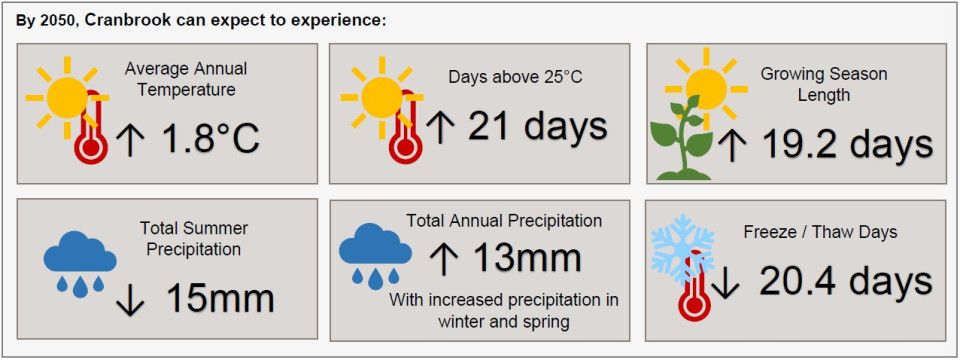
The City of Cranbrook has been working on several climate change mitigation and adaptation initiatives over the last 10 years, with a significant amount of progress made since 2019. The City has incorporated a corporate energy conservation program (since 2012) and community water conservation program (since 2014) in its regular operations.
Also learn about:
Climate Change Adaptation
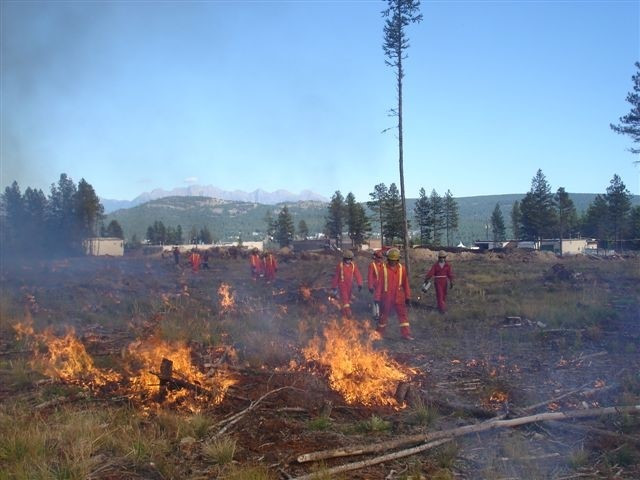
 From 2019-2021, the City participated in the Rural Climate Adaptation Capacity Building Project (Project) with the Columbia Basin Rural Development Institute at Selkirk College. The purpose of the Project was to provide capacity building in support of local climate adaptation efforts, and complete climate change resilience activities and training specific to our region. Through the involvement in this Project, the City:
From 2019-2021, the City participated in the Rural Climate Adaptation Capacity Building Project (Project) with the Columbia Basin Rural Development Institute at Selkirk College. The purpose of the Project was to provide capacity building in support of local climate adaptation efforts, and complete climate change resilience activities and training specific to our region. Through the involvement in this Project, the City:
- determined its state of climate adaptation;
- completed a natural asset inventory including risk assessment;
- performed watershed modeling incorporating climate forecasts;
- identified additional climate change communications; and
- participated in numerous peer learning sessions with local governments from our region.
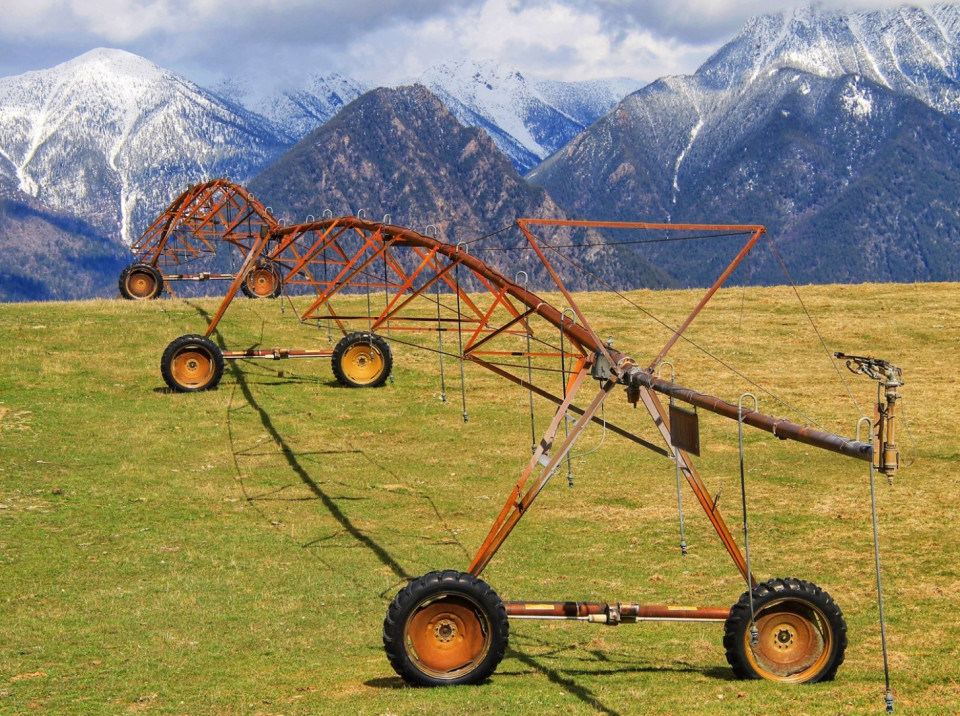
The trend toward wetter springs and drier summers in Cranbrook is likely to have negative implications for the City of Cranbrook’s water supply from Joseph and Gold Creeks. These low elevation watersheds are likely to experience reduced snowpacks and earlier snowmelt resulting in reduced and longer periods of summer low flows. Reduced surface flows could also impact the volume of water available for recharging the groundwater aquifer that Cranbrook relies on for its water supply, especially in late summer and early fall. The long-term discharge data available for nearby Moyie River above Noke Creek reveals a decrease in the volume of summer low flows over the 52-year record. The City’s water system demonstrates some of the challenges common to utilities in many Canadian communities, including limited resources for system monitoring and improvements. The City of Cranbrook is actively addressing many of its water supply needs, risks and challenges by completing a Master Drinking Water Quality and Supply Strategy in 2019-2020, which includes installation of four stream flow monitoring sites to provide real-time data on water quality and quantity. The flow monitoring stations at Gold Creek, Joseph Creek, Hospital Creek and Jim Smith Creek will gather flow data as well as water quality parameters such as temperature, pH, conductivity, and turbidity. This information will be used primarily to inform water operations for real time water quality and flow, as well as long-term trends for supply and quality sustainability. Additionally, this data will be used to inform ecological impacts of flow quantity and quality on local fish, wildlife and vegetation.
The City has several resources and initiatives to help prevent flooding of homes and businesses. Automated stream flow monitoring stations support community water supply and allow for flood risk planning and action.
Climate Change Mitigation
 In 2008, the City of Cranbrook (City) signed on to the BC Climate Action Charter, which is a voluntary agreement between the Province of British Columbia, the Union of BC Municipalities, and individual local government signatories who are committed to aiming to reduce GHG emissions, measure and report corporate greenhouse gas (GHG) emissions, and create an energy-efficient community. In 2017, the City joined the Federation of Canadian Municipalities (FCM) Partners for Climate Protection Program (PCP Program). The PCP Program, which is managed and delivered by FCM and ICLEI – Local Governments for Sustainability Canada, provides a framework to local governments for taking inventory of GHG emissions, and developing targets and plans for their reduction.
In 2008, the City of Cranbrook (City) signed on to the BC Climate Action Charter, which is a voluntary agreement between the Province of British Columbia, the Union of BC Municipalities, and individual local government signatories who are committed to aiming to reduce GHG emissions, measure and report corporate greenhouse gas (GHG) emissions, and create an energy-efficient community. In 2017, the City joined the Federation of Canadian Municipalities (FCM) Partners for Climate Protection Program (PCP Program). The PCP Program, which is managed and delivered by FCM and ICLEI – Local Governments for Sustainability Canada, provides a framework to local governments for taking inventory of GHG emissions, and developing targets and plans for their reduction.
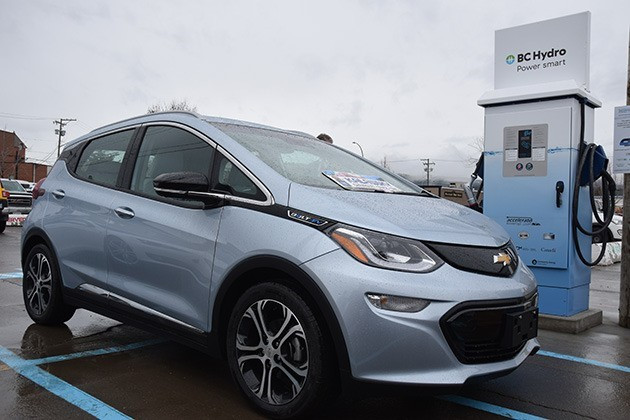
In 2021, the City partnered with the Community Energy Association to develop the City’s Community Climate Action Plan, which provided an update to the City’s 2013 Community Energy & Emissions Plan. Through the development of this Community Climate Action Plan, the City engaged with key community stakeholders representing climate action groups, Interior Health, School District, and the business/tourism industry. In 2022, the City adopted the Corporate Climate Action Plan that outlines GHG reduction initiatives in corporate operations as well as climate adaptation measures.
Learn more about:
 Cranbook
Cranbook




